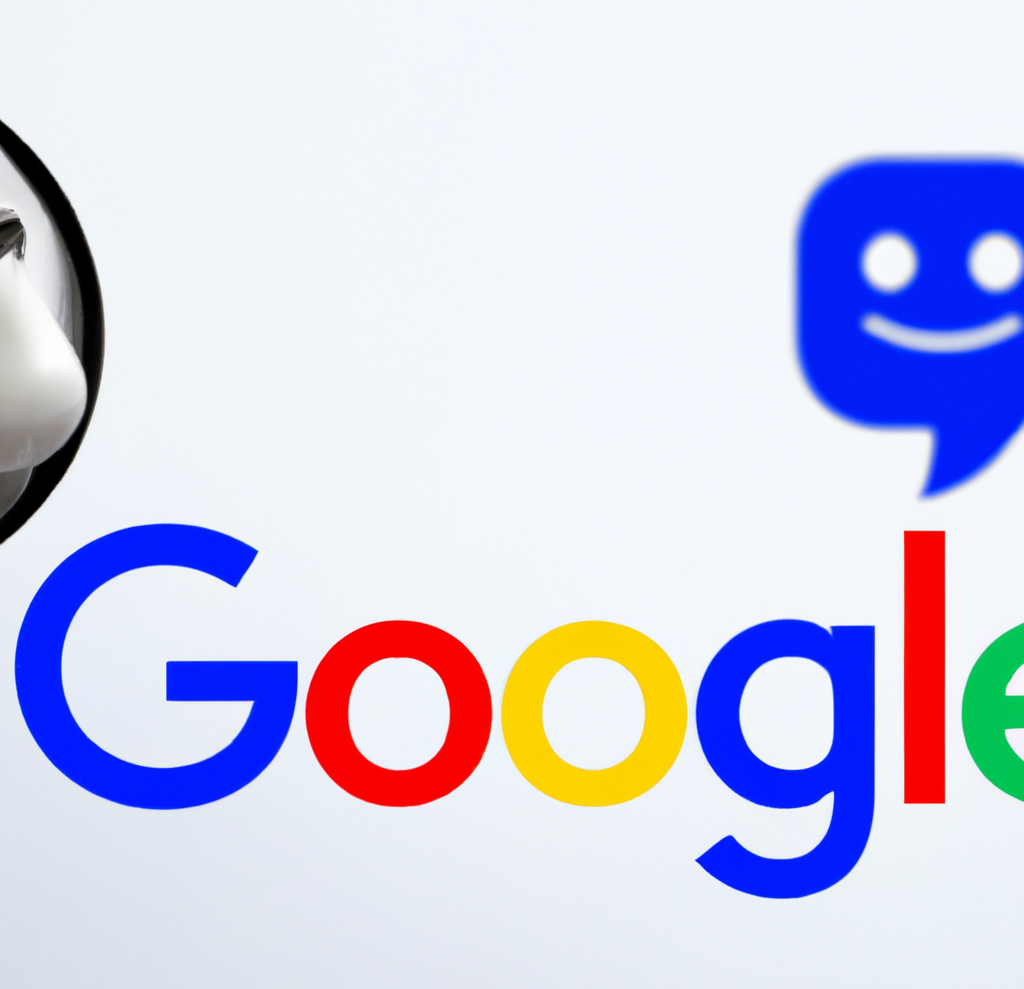Google: How to Increase Offline Sales for Local Businesses

Understanding all the ways customers are trying to find businesses will help create more sales.
For local retail, Google shared that various kinds of searches are growing exponentially.
In particular, three kinds of searches are showing dramatic increases:
- The first kind of search involves consumers searching for businesses that are local to them.
- The second type of search involves consumers who are searching for businesses local to them that have something specific in stock.
- The third kind of search involve restaurant related searches.
Google’s guide shared:
Local Retail
“Searches for “local” + “business(es)” have grown by more than 80% year over year, including searches like “local businesses near me” and “support local businesses.”
Searches for “who has” + “in stock” have grown by more than 8,000% year over, including searches like “who has Nintendo switch in stock” and “who has gym equipment in stock.””
Local Restaurant Searches
Google next shared that dining related consumers used not only Google search but Google Ads to find information prior to making a purchase. Google advertising can be a good way to gain an extra edge over competitors.
Google shared:
“Two out of three dining consumers said they used search to find food and beverage information during the pandemic.
Fifty-seven percent of dining consumers said they discovered food and beverage information during the pandemic via online ads.”
Think With Google article: What’s New at Mealtime?
YouTube and Local Shopping
YouTube isn’t normally considered as a way to drive sales to a local business. But it should be considered. Google shows YouTube videos in response to search queries and in specific contexts that provide more information for searchers who need to know about a service or product.
According to Google:
“Forty-five percent of viewers say they watch YouTube to see a product demo before buying.
Viewers say they are 2x more likely to go in-store or online to buy something they saw on YouTube versus the competitive average.”
Google Maps
Google Maps isn’t normally considered as a search engine. But like YouTube, it’s where people are turning to find local businesses that provide specific services.
This trend highlights the importance of claiming a free Google My Business account and working with that to enhance your Google Maps listings.
The important takeaway here is that Google Maps should be considered as a search engine that provides a highly targeted context for your local business presence.
Google shared:
- “Searches on Google Maps for “curbside pickup” have increased 9000% year over year in the U.S.
- Searches on Google Maps for “discounts” have grown globally by more than 100% year over year.
- Searches on Google Maps for “gift shop” have grown globally by more than 60% year over year.”
Google Maps is more than just a way to learn how to get from here to there. Consumers are using it to find businesses.
These are the top generic searches in Google Maps:
(Source: Google Data, U.S., February 2021)
- “restaurants
- hotels
- restaurants near me
- gas
- food
- food near me
- grocery store
- gas station
- coffee
- pizza”
Guide to Offline Sales
Google also published a short support page for businesses on how to get more local search related traffic with advertising that also contained two tips that also relate to non-advertising search traffic. (Build Your Digital Storefront)
The first tip advised businesses to build an online storefront and to use it together with a free Google My Business account to stand out in local related searches within Google regular search results and in Google Maps.
The second tip showed how to get up to 42% more referrals from Google.
Google shared:
“The key to driving store traffic from the web into your physical location is letting customers know you’re close by and that you have what they’re looking for.
Businesses that add photos to their Business Profiles receive 42% more requests for directions on Google Maps, and 35% more clicks through to their websites than businesses that don’t.”
That 42% and 35% increases in engagement because of photos is not surprising. In an article about images (5 Benefits to Using Visual Content in PDF Marketing Materials) I highlighted ways that images engage consumers and drive sales.
Highlights are:
1. Images Are Emotionally Engaging
Scientific research discovered that images can influence a viewer’s emotions in a positive manner that enhances the marketing message.
2. Images Reduce Reading Fatigue
People absorb information through images as well as text. Images as a way to communicate how delicious a menu item is or the professional level of your employees should not be underestimated.
3. Images Are Easier to Remember
Images make a strong impact on consumers because they are easy to recall. According to research, consumers have the ability to remember over 2,000 images for days with a 90% accuracy.
4. Graphs Communicate Visually
Graphs can be a fantastic way to communicate the superiority of your business or communicate ideas. According to MIT neuroscientists, a human brain can identify images within 13 milliseconds. Communicating ideas visually is a powerful way of successfully getting across a marketing message.
5. Images Build Trust & Increase Profitability
Researchers have discovered, through analysis of millions of eBay auctions, that the liberal use of images increases sales.
Google is More than Ten Links on a Search Result
There are many takeaways in Google’s helpful guide. The most important is to expand beyond trying to rank in Google search and consider ways to increase visibility in Google Maps and YouTube. Additionally it may be helpful to add as many well staged and photographed images as possible in order to communicate the professionalism and high quality of the products and services on offer.
Citations
Guide to Offline Sales With Online Ads
5 Benefits to Using Visual Content in PDF Marketing Materials
AI
Exploring the Evolution of Language Translation: A Comparative Analysis of AI Chatbots and Google Translate

According to an article on PCMag, while Google Translate makes translating sentences into over 100 languages easy, regular users acknowledge that there’s still room for improvement.
In theory, large language models (LLMs) such as ChatGPT are expected to bring about a new era in language translation. These models consume vast amounts of text-based training data and real-time feedback from users worldwide, enabling them to quickly learn to generate coherent, human-like sentences in a wide range of languages.
However, despite the anticipation that ChatGPT would revolutionize translation, previous experiences have shown that such expectations are often inaccurate, posing challenges for translation accuracy. To put these claims to the test, PCMag conducted a blind test, asking fluent speakers of eight non-English languages to evaluate the translation results from various AI services.
The test compared ChatGPT (both the free and paid versions) to Google Translate, as well as to other competing chatbots such as Microsoft Copilot and Google Gemini. The evaluation involved comparing the translation quality for two test paragraphs across different languages, including Polish, French, Korean, Spanish, Arabic, Tagalog, and Amharic.
In the first test conducted in June 2023, participants consistently favored AI chatbots over Google Translate. ChatGPT, Google Bard (now Gemini), and Microsoft Bing outperformed Google Translate, with ChatGPT receiving the highest praise. ChatGPT demonstrated superior performance in converting colloquialisms, while Google Translate often provided literal translations that lacked cultural nuance.
For instance, ChatGPT accurately translated colloquial expressions like “blow off steam,” whereas Google Translate produced more literal translations that failed to resonate across cultures. Participants appreciated ChatGPT’s ability to maintain consistent levels of formality and its consideration of gender options in translations.
The success of AI chatbots like ChatGPT can be attributed to reinforcement learning with human feedback (RLHF), which allows these models to learn from human preferences and produce culturally appropriate translations, particularly for non-native speakers. However, it’s essential to note that while AI chatbots outperformed Google Translate, they still had limitations and occasional inaccuracies.
In a subsequent test, PCMag evaluated different versions of ChatGPT, including the free and paid versions, as well as language-specific AI agents from OpenAI’s GPTStore. The paid version of ChatGPT, known as ChatGPT Plus, consistently delivered the best translations across various languages. However, Google Translate also showed improvement, performing surprisingly well compared to previous tests.
Overall, while ChatGPT Plus emerged as the preferred choice for translation, Google Translate demonstrated notable improvement, challenging the notion that AI chatbots are always superior to traditional translation tools.
Source: https://www.pcmag.com/articles/google-translate-vs-chatgpt-which-is-the-best-language-translator
Google Implements Stricter Guidelines for Mass Email Senders to Gmail Users

Beginning in April, Gmail senders bombarding users with unwanted mass emails will encounter a surge in message rejections unless they comply with the freshly minted Gmail email sender protocols, Google cautions.
Fresh Guidelines for Dispatching Mass Emails to Gmail Inboxes In an elucidative piece featured on Forbes, it was highlighted that novel regulations are being ushered in to shield Gmail users from the deluge of unsolicited mass emails. Initially, there were reports surfacing about certain marketers receiving error notifications pertaining to messages dispatched to Gmail accounts. Nonetheless, a Google representative clarified that these specific errors, denoted as 550-5.7.56, weren’t novel but rather stemmed from existing authentication prerequisites.
Moreover, Google has verified that commencing from April, they will initiate “the rejection of a portion of non-compliant email traffic, progressively escalating the rejection rate over time.” Google elaborates that, for instance, if 75% of the traffic adheres to the new email sender authentication criteria, then a portion of the remaining non-conforming 25% will face rejection. The exact proportion remains undisclosed. Google does assert that the implementation of the new regulations will be executed in a “step-by-step fashion.”
This cautious and methodical strategy seems to have already kicked off, with transient errors affecting a “fraction of their non-compliant email traffic” coming into play this month. Additionally, Google stipulates that bulk senders will be granted until June 1 to integrate “one-click unsubscribe” in all commercial or promotional correspondence.
Exclusively Personal Gmail Accounts Subject to Rejection These alterations exclusively affect bulk emails dispatched to personal Gmail accounts. Entities sending out mass emails, specifically those transmitting a minimum of 5,000 messages daily to Gmail accounts, will be mandated to authenticate outgoing emails and “refrain from dispatching unsolicited emails.” The 5,000 message threshold is tabulated based on emails transmitted from the same principal domain, irrespective of the employment of subdomains. Once the threshold is met, the domain is categorized as a permanent bulk sender.
These guidelines do not extend to communications directed at Google Workspace accounts, although all senders, including those utilizing Google Workspace, are required to adhere to the updated criteria.
Augmented Security and Enhanced Oversight for Gmail Users A Google spokesperson emphasized that these requisites are being rolled out to “fortify sender-side security and augment user control over inbox contents even further.” For the recipient, this translates to heightened trust in the authenticity of the email sender, thus mitigating the risk of falling prey to phishing attempts, a tactic frequently exploited by malevolent entities capitalizing on authentication vulnerabilities. “If anything,” the spokesperson concludes, “meeting these stipulations should facilitate senders in reaching their intended recipients more efficiently, with reduced risks of spoofing and hijacking by malicious actors.”
Google’s Next-Gen AI Chatbot, Gemini, Faces Delays: What to Expect When It Finally Launches

In an unexpected turn of events, Google has chosen to postpone the much-anticipated debut of its revolutionary generative AI model, Gemini. Initially poised to make waves this week, the unveiling has now been rescheduled for early next year, specifically in January.
Gemini is set to redefine the landscape of conversational AI, representing Google’s most potent endeavor in this domain to date. Positioned as a multimodal AI chatbot, Gemini boasts the capability to process diverse data types. This includes a unique proficiency in comprehending and generating text, images, and various content formats, even going so far as to create an entire website based on a combination of sketches and written descriptions.
Originally, Google had planned an elaborate series of launch events spanning California, New York, and Washington. Regrettably, these events have been canceled due to concerns about Gemini’s responsiveness to non-English prompts. According to anonymous sources cited by The Information, Google’s Chief Executive, Sundar Pichai, personally decided to postpone the launch, acknowledging the importance of global support as a key feature of Gemini’s capabilities.
Gemini is expected to surpass the renowned ChatGPT, powered by OpenAI’s GPT-4 model, and preliminary private tests have shown promising results. Fueled by significantly enhanced computing power, Gemini has outperformed GPT-4, particularly in FLOPS (Floating Point Operations Per Second), owing to its access to a multitude of high-end AI accelerators through the Google Cloud platform.
SemiAnalysis, a research firm affiliated with Substack Inc., expressed in an August blog post that Gemini appears poised to “blow OpenAI’s model out of the water.” The extensive compute power at Google’s disposal has evidently contributed to Gemini’s superior performance.
Google’s Vice President and Manager of Bard and Google Assistant, Sissie Hsiao, offered insights into Gemini’s capabilities, citing examples like generating novel images in response to specific requests, such as illustrating the steps to ice a three-layer cake.
While Google’s current generative AI offering, Bard, has showcased noteworthy accomplishments, it has struggled to achieve the same level of consumer awareness as ChatGPT. Gemini, with its unparalleled capabilities, is expected to be a game-changer, demonstrating impressive multimodal functionalities never seen before.
During the initial announcement at Google’s I/O developer conference in May, the company emphasized Gemini’s multimodal prowess and its developer-friendly nature. An application programming interface (API) is under development, allowing developers to seamlessly integrate Gemini into third-party applications.
As the world awaits the delayed unveiling of Gemini, the stakes are high, with Google aiming to revolutionize the AI landscape and solidify its position as a leader in generative artificial intelligence. The postponed launch only adds to the anticipation surrounding Gemini’s eventual debut in the coming year.
-

 PPC5 days ago
PPC5 days ago19 Best SEO Tools in 2024 (For Every Use Case)
-

 MARKETING7 days ago
MARKETING7 days agoStreamlining Processes for Increased Efficiency and Results
-
SEARCHENGINES6 days ago
Daily Search Forum Recap: April 17, 2024
-

 PPC7 days ago
PPC7 days ago97 Marvelous May Content Ideas for Blog Posts, Videos, & More
-

 SEO7 days ago
SEO7 days agoAn In-Depth Guide And Best Practices For Mobile SEO
-
SEARCHENGINES5 days ago
Daily Search Forum Recap: April 18, 2024
-

 MARKETING6 days ago
MARKETING6 days agoEcommerce evolution: Blurring the lines between B2B and B2C
-
SEARCHENGINES4 days ago
Daily Search Forum Recap: April 19, 2024















